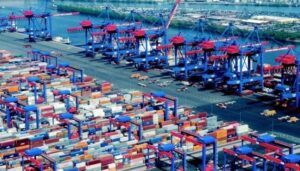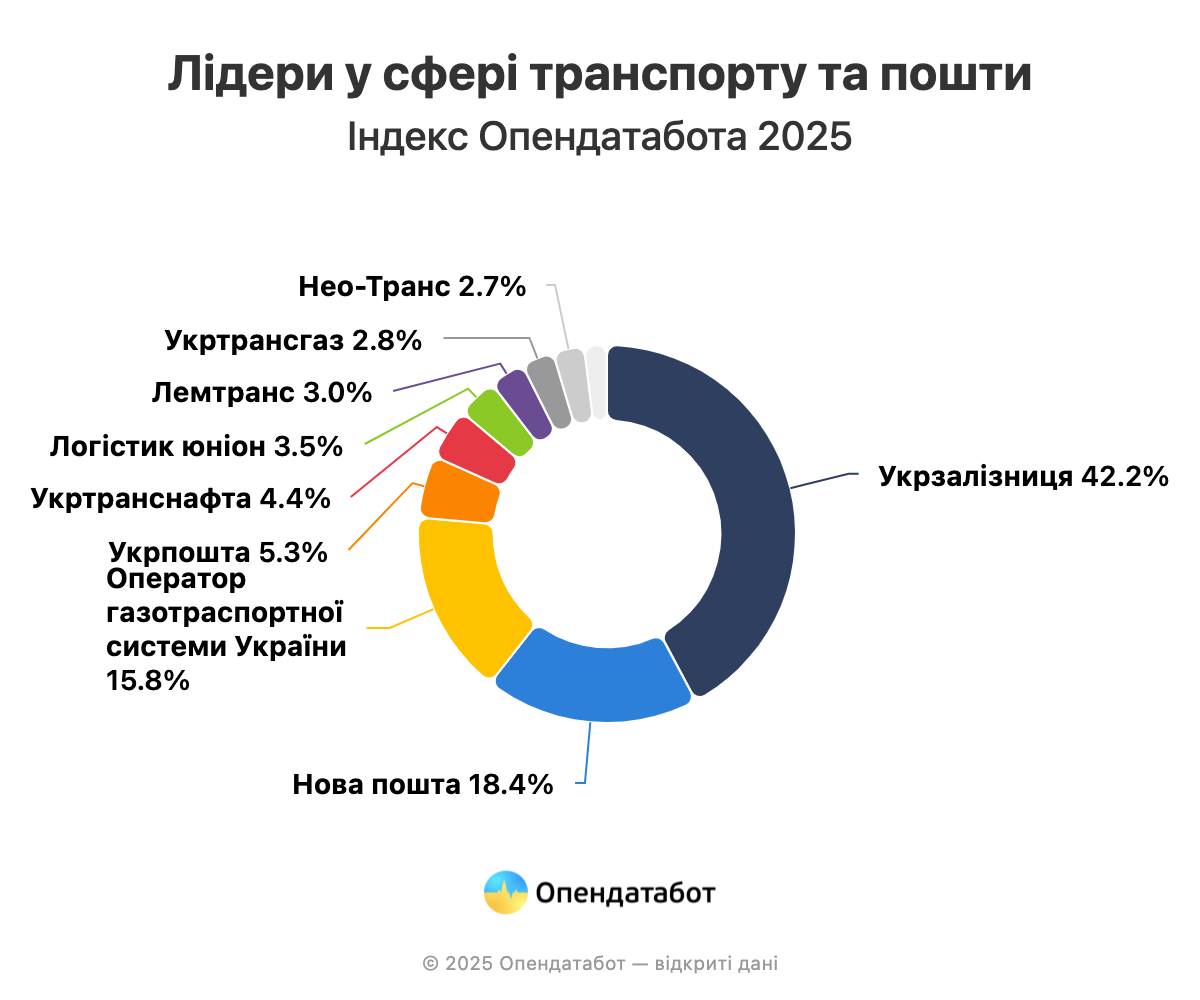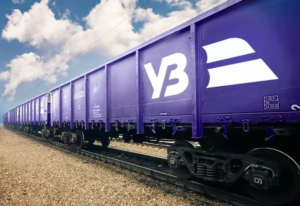
The total revenue of the top ten companies in this sector increased by 12%
According to the Opendatabot Index, the top ten companies in the transportation and logistics sector generated more than UAH 243 billion in total revenue last year. This is 12% more than in 2023. Only 5 out of 10 companies managed to make a profit that year.
According to the Opendatabot Index, the leading companies in the field of transport and postal services earned UAH 243.67 billion in revenue. Their total revenue grew by 12% over the year.
Not everyone had a good year: 8 companies saw their revenues grow, but only 5 of the top ten managed to make a net profit. The total profit of the top five was UAH 8.16 billion, while the losses of the other four companies amounted to UAH 12.1 billion. Another company broke even last year.
Despite the fact that half of the leading companies are state-owned, they account for more than 70% of the total income of the top five: UAH 171.89 billion.
Ukrzaliznytsia, the permanent leader of the Index, received UAH 102.87 billion in revenue last year (+11% yoy). However, the company still made a loss at the end of the year: UAH 4.19 billion. Ukrtransgaz had a similar situation: its revenue decreased by almost a third, and its losses reached UAH 7.44 billion.
Ukrposhta had a more successful year. Despite the fact that the company ended the year in the red, it managed to reduce its losses by almost 2 times. Overall, Ukrposhta increased its revenue by 12% to UAH 12.98 billion last year.
“For us, this rating and its results are not just numbers on the screen. These are years of hard work by tens of thousands of people who have been implementing reforms step by step and turning Ukrposhta into a modern and successful business. Despite the challenges of the war and the fact that we are a business with a human face, guided not only by short-term financial gain but also by the welfare of Ukrainians, we succeed,” comments Igor Smelyansky, CEO of Ukrposhta.
Another state-owned company, the Ukrainian Gas Transmission System Operator, increased its revenues by 7% to UAH 38.53 billion over the year. Although net profit decreased by 8.7 times to UAH 1.27 billion, the company still ended the year in the black.
“Ukraine’s GTS operator operates stably and reliably despite numerous challenges caused by the full-scale war. The company clearly and timely fulfills its obligations to internal and external customers of natural gas transportation services. This approach ensures the financial sustainability of the Company’s development,” said Vladislav Medvedev, acting CEO of GTSOU.
The revenue of the state-owned Ukrtransnafta decreased insignificantly, but its profit dropped by 16 times to UAH 1.22 billion. It is worth noting that in the previous Index, this company was the leader in terms of profit among the top ten.
For the second year in a row, Nova Poshta, which belongs to the NOVA group, has been ranked second in the Index, with its revenue up 23% to UAH 44.78 billion. But profit, on the contrary, decreased by 1.6 times to UAH 2.5 billion.
“In 2024, Nova Poshta became the world’s best postal operator according to the World Post & Parcel Award, expanding its network to more than 37,000 service points in Ukraine and more than 87,000 in 16 European countries by the end of the year. Last year, we opened the first barrier-free post office in Ukraine and donated more than UAH 4.8 billion for humanitarian needs and support of the army. 2024 was about movement and the challenges we managed to overcome,” the company commented.
This year, another NOVA Group company, Neo-Trans, was included in the Index for the first time. It showed the fastest revenue growth among the top ten: +100% (UAH 6.5 billion). Its profit also doubled to UAH 116.55 million. Together, the two NOVA companies account for 21% of the total revenue of the leaders.
Logistician Union of the ATB group is not far behind. Thus, the company moved up several positions in the ranking, increasing its revenue by 29% and earning the largest profit of all – UAH 3.06 billion (+40%).
Lemtrans, a company of Akhmetov’s SCM Group, demonstrates stability and remains in the seventh position for the third year in a row. Its revenue increased by only 3% to UAH 7.3 billion.
This year’s Index includes another new company, Ukrainian Helicopters. Despite a 17% increase in revenue (up to UAH 872 million), which allowed it to break into the top, the business recorded a loss of UAH 52.5 million.
At the same time, two companies from Oleksandr Radavsky’s agricultural holding, Promvagontrans and Berehove Grain Receiving Enterprise, dropped out of the 2025 Index. In 2024, their revenues decreased by 2.5 and 3 times, respectively, but both of them turned a profit: +UAH 2 million and +UAH 36 million in profit.
https://opendatabot.ua/analytics/index-transport-and-mail-2025


The volume of cargo transportation in Ukraine in January-September 2024 increased by 11.7% compared to the same period in 2023 to 263.5 million tons, according to the State Statistics Service (Ukrstat).
According to the agency, cargo turnover for the first 9 months of this year increased by 15.7% to 138.17 billion ton-km.
According to the State Statistics Service, the number of passengers transported in January-September this year increased by 9% to 1.62 billion people, while passenger turnover increased by 12.7% to 32.51 billion passenger-km.
It is noted that the growth dynamics of these indicators is slowing down. In particular, in the first quarter, cargo turnover grew by 24%, while in the first half of the year it grew by 18.6%, and passenger turnover by 23.9% and 17.2%, respectively.
The data exclude the territories temporarily occupied by Russia and parts of the territories where military operations have been (are) ongoing.

In 2024, the cost of exporting grain cargo by rail in Ukraine decreased from $21.3/ton to $14-14.5/ton, Valery Tkachev, Deputy Director of Transportation Technology and Commercial Work Department at Ukrzaliznytsia (UZ), wrote on Facebook.
The main reason for the reduction in logistics costs, he said, was the reduction in the cost of using grain wagons.
“Over the course of the year, the cost of using grain wagons decreased from UAH 1688 per day to UAH 280-330 per day, a 5-5.5-fold reduction,” Tkachev emphasized.
According to him, as of November, UZ has a surplus of 5000-7000 grain cars.

In January-October 2024, Ukrzaliznytsia (UZ) increased its cargo transportation by 21.9% compared to the same period in 2023, to 146.94 million tons.
“In January-October 2024, Ukrainian rail transport transported 146.94 million tons, which is 26.4 million tons, or 21.9%, more than in the same period last year. In October, the volume of cargo transportation amounted to 15.06 million tons, which is 8.8% more than in September,” UZ said in an analytical note prepared for the meeting of the Exporters’ Office on Thursday.
The volume of transportation in export traffic for 10 months of 2024 increased by 64.2% to 71.07 million tons. At the same time, exports accounted for 48% of total transportation, while in the same period in 2023 it was 36%.
In the first 10 months of the year, grain cargo took the first place in total exports – 28.85 million tons (40.6%). Transportation volumes of iron and manganese ore amounted to 27.67 million tons (38.9%), ferrous metals – 4.33 million tons (6.1%), and construction materials – 3.49 million tons (4.9%).
“In the current environment, the steel and agricultural sectors retain the status of the mainstay of Ukrainian exports. The sea routes remain the main channel for increasing the supply of Ukrainian goods to foreign markets,” UZ analytical note says.
It is noted that the dynamics of cargo transportation volumes is affected by massive shelling and the state of the energy sector.
Earlier it was reported that since the beginning of the year, UZ has increased the volume of cargo transportation by almost a quarter, reducing it in September compared to August.

In the period from September 25 to September 27, at the checkpoint “Mohyliv-Podilskyi – Otacs”, there may be traffic restrictions due to the installation of weighing complexes, namely
– 25.09 – in the direction of “entry to Ukraine”;
– 26-27.09 – in the direction of “exit from Ukraine”.
During the repair works, the traffic of commercial vehicles may be limited to one lane.